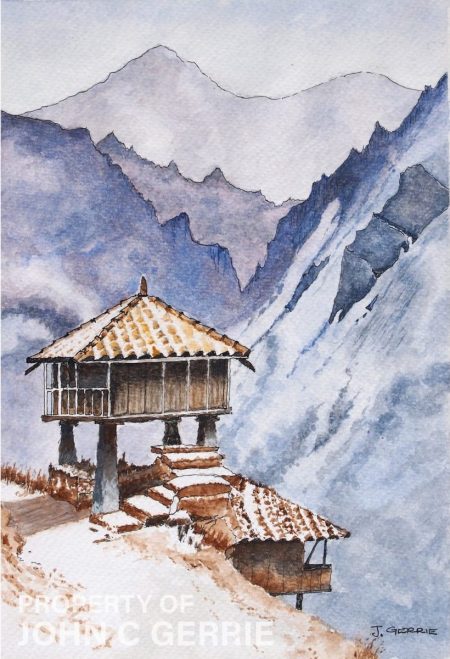Opposing Colours in Watercolours
This month, I want to spend some time explaining the use of different colors than what one would normally use to identify various parts of a painting.
To explain this concept, I have attached a watercolor painting that I created several years ago of a shepherd’s hut in northern Spain. I actually found the hut on Google Earth. It was located in a forest, with a solitary path running nearby, far away from any civilization.

The hut itself was a simple single-story wooden structure with a porch, standing on stilts. It was accessible through stone steps and a ladder to keep people safe from wandering bears. When I painted the scene, it was early spring, and there was melting snow on the roof. If I had painted the background forest with the typical green colors of early spring and included intricate details of the trees, the subject would have blended into the surroundings.
Instead, I used my artistic freedom and painted the wildness of the mountains using different shades of blue (not greens). This made the subject of the hut stand out. By varying the intensity of the blue for different parts of the mountains, I created a sense of depth in the landscape, giving the final impression of complete remoteness.
This technique is not difficult to master; it simply involves using contrasting colors with varying strengths as a background wash to enhance and emphasize the main subject of the watercolor. In this case, it was the wooden hut situated on the edge of a steep slope, overlooking another hut.
This style works particularly well in landscapes and seascapes that capture a wide area, such as moorland and calm bodies of water. It is especially suitable for watercolor paintings, where layers of muted colors are applied as a single wash.
Remember, the key is to experiment and use artistic license to play with contrasting colors that enhance the main subject and create a visually captivating painting.
During this time of year, with the bright sunlight, this style can be especially effective. If you usually work with smaller paper or canvas sizes, I encourage you to try working on a larger scale. You might be surprised by how effective this technique can be in enhancing your painting skills.
